This Banana Bread recipe is easy to make, extra moist, and extremely tasty. This delicious treat is made from overripe bananas that have been mashed and mixed with rolled oats, flour, baking powder, baking soda, sugar, eggs, milk, oil, cinnamon, nutmeg, and vanilla extract. Banana bread is believed to have been invented in the USA during the Great Depression after the invention of baking soda.
Table of contents
Ways to Make Banana Bread
Banana bread has dozens of variations but the basic ingredients remain the same. Some recipes call for nuts, some for rum-soaked raisins, chocolate chips, blueberries, and some even use oranges. This recipe calls for a bit of oil to increase the moisture in the finished bread. You can also wrap the banana bread in tin foil after it comes out of the oven to help it retain moisture and keep it from drying out.
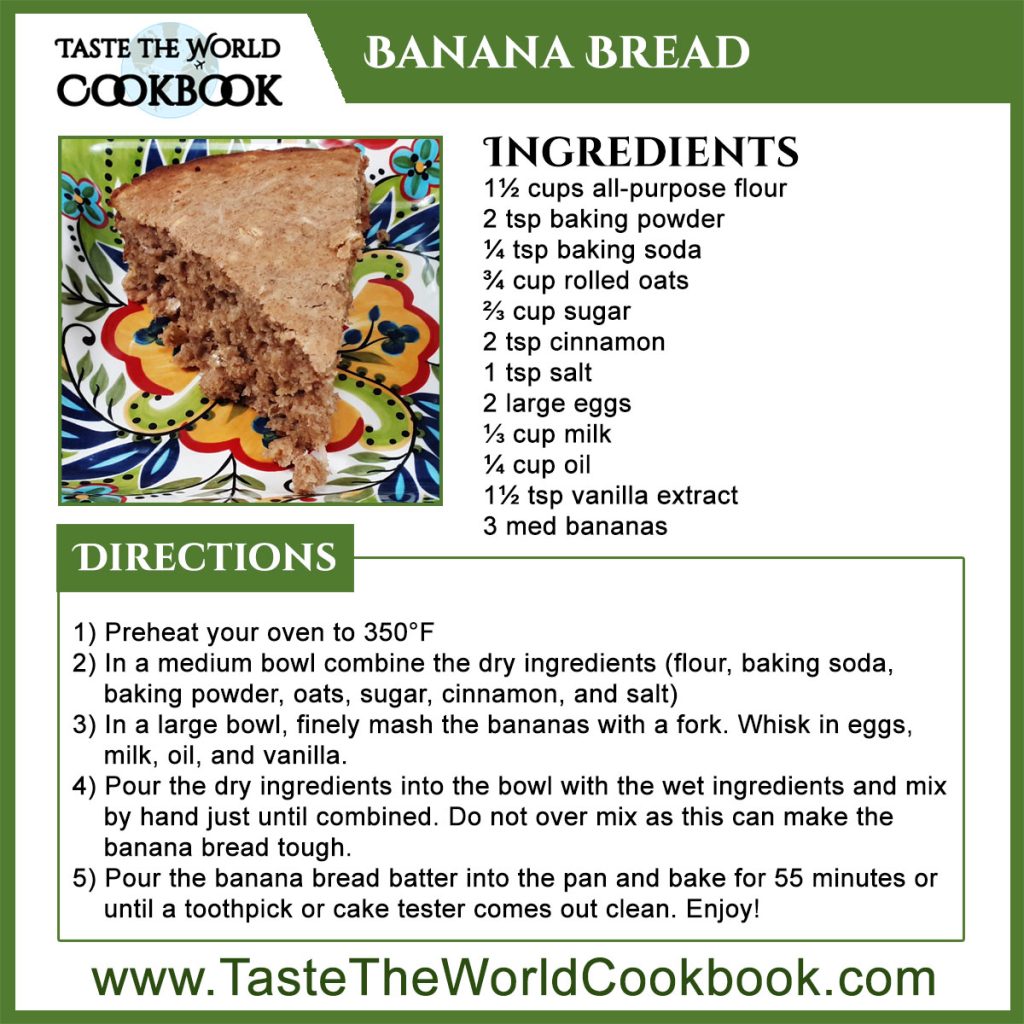
How to Store Banana Bread
While nothing is better than eating banana bread fresh out of the oven, you can store it in an airtight container or covered in plastic wrap. Do not refrigerate the banana bread and leave it out on the counter.
You can freeze the banana bread by wrapping it tightly in plastic wrap or in a freezer bag for up to 3 to 4 months in the freezer.
History of Banana Bread
Banana bread recipes began being featured in well-known cookbooks across North America as baking soda and baking powder were being mass-produced and becoming available in grocery stores in the 1930s. It appeared in Pillsbury’s 1933 Balanced Recipes cookbook and later gained more acceptance with the release of the original Chiquita Banana’s Recipe Book in 1950.
The Metropolitan City of Minneapolis, Minnesota
Minneapolis is a major city in Minnesota that forms the “Twin Cities” with the neighboring state capital of St. Paul. Bisected by the Mississippi River, it’s known for its parks and lakes. Minneapolis is also home to many cultural landmarks like the Walker Art Center, a contemporary art museum, and the adjacent Minneapolis Sculpture Garden, famed for Claes Oldenburg’s “Spoonbridge and Cherry” sculpture.
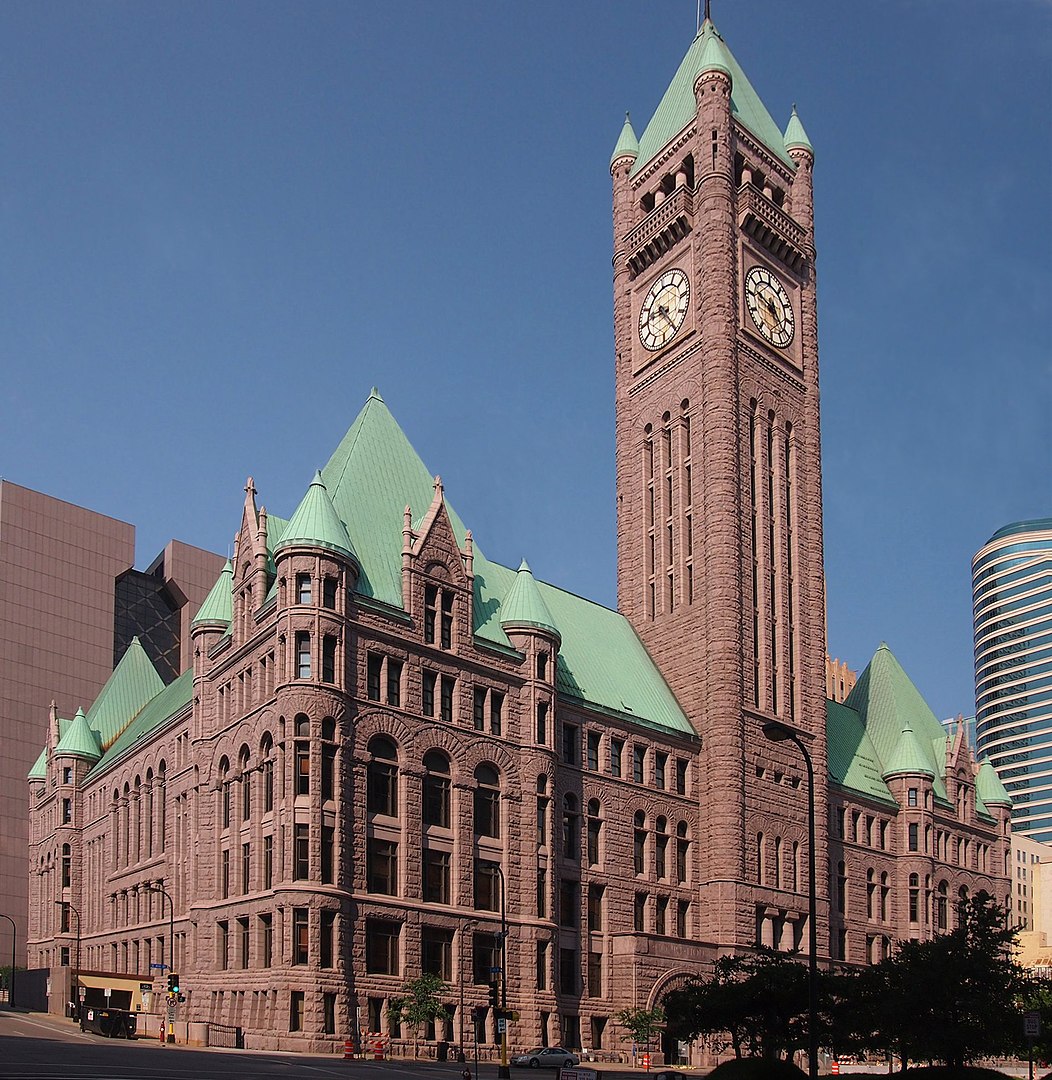

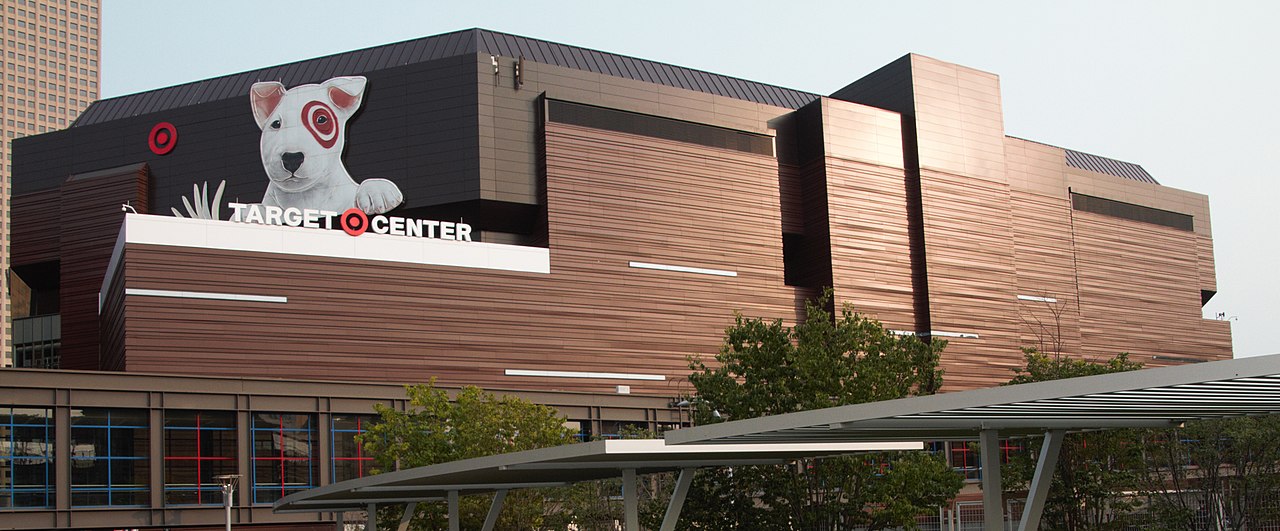


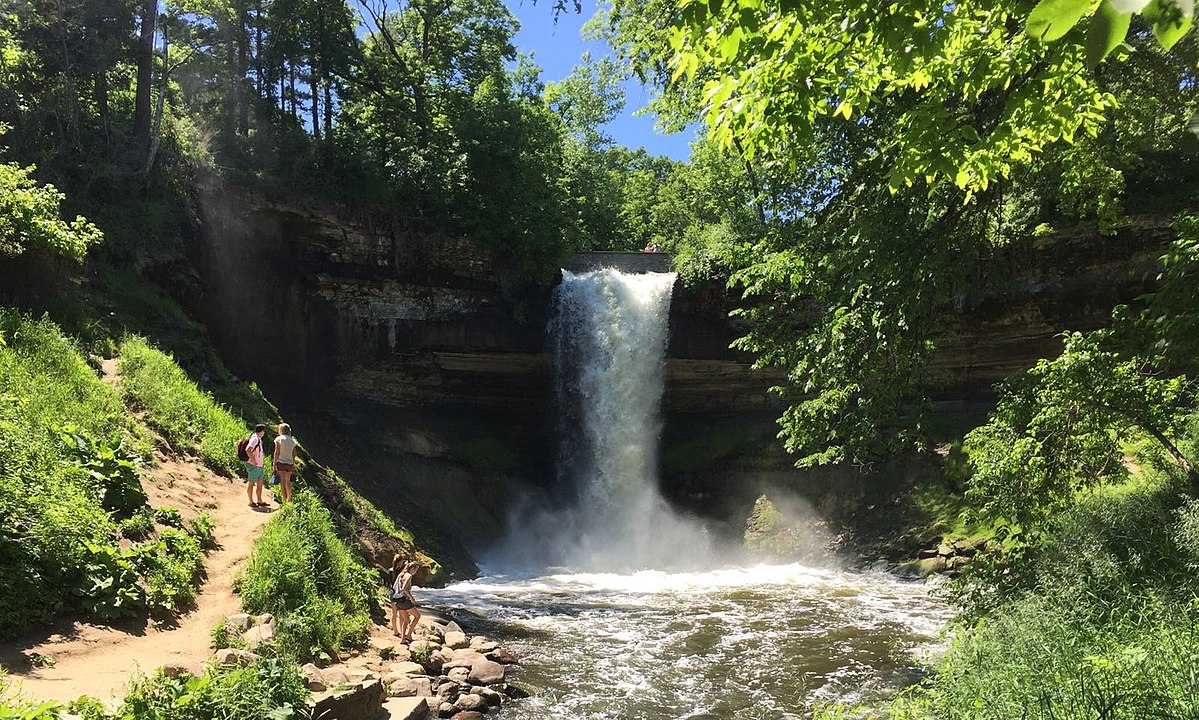

A Brief History of Minneapolis
Prior to European colonization, the Dakota Sioux were the sole occupants of the site of modern-day Minneapolis. In the Dakota language, the city’s name is Bdeóta Othúŋwe (Many Lakes City).
The French explored the region in 1680. Gradually, more European-American settlers arrived, competing with the Dakota for the game and other natural resources. Following the Revolutionary War, the 1783 Treaty of Paris gave British-claimed territory east of the Mississippi River to the United States. In 1803, the U.S. acquired land to the west of the Mississippi from France in the Louisiana Purchase.
In 1819, US Army built Fort Snelling at the southern edge of present-day Minneapolis to direct Native American trade away from British-Canadian traders, and to deter warring between the Dakota and Ojibwe in northern Minnesota. The fort attracted traders, settlers, and merchants, spurring growth in the surrounding region.
The U.S. government pressed the Dakota to sell their land, which they ceded in a series of treaties that were negotiated by corrupt officials. In the decades following the signings of these treaties, their terms were rarely honored. During the American Civil War, officials plundered annuities promised to Native Americans, leading to famine among the Dakota peoples. In 1862, a faction of the Dakota who were facing starvation declared war and killed settlers. The Dakota were interned and exiled from Minnesota.
Tourism in Minneapolis
In the last half of the 20th century, famed architects like Jacques Herzog, Pierre de Meuron, and Frank Gehry transformed the quiet Midwestern farming cities of Minneapolis and St. Paul into a booming cultural metropolis, complete with the contemporary Walker Art Center and the Weisman Art Museum. Minneapolis and St. Paul’s artistic, architectural, and theatrical renaissance has made this region of the Midwest culturally fertile.
Joined by roughly 10 miles of urban sprawl, these fraternal twin cities were named as such to remind outsiders looking in of their differences. Originally, Irish and German immigrants built St. Paul, while Scandinavians settled in Minneapolis. St. Paulites hold tight to their heritage, continuing architectural styles, and beer brewing traditions. However, the Minneapolitans proudly favor modern progress. Residents are quick to distinguish the two, but visitors usually find it difficult. The buildings act as good markers of distinction: Minneapolis is cutting-edge, tall, and modern; St. Paul is short, historical, and modest. The contrast (and competition) only enhances the character of this coupled metropolitan area.
The Cuisine of Minneapolis
Midwestern cuisine is a regional cuisine of the American Midwest. It draws its culinary roots most significantly from the cuisines of Central, Northern, and Eastern Europe, and Native North America, and is influenced by regionally and locally grown foodstuffs and cultural diversity.
Everyday Midwestern home cooking generally showcases simple and hearty dishes that make use of the abundance of locally grown foods. Its culinary profiles may seem synonymous with “American food.
– Featured Bakery –
Butter Bakery Cafe
3700 Nicollet Ave, Minneapolis, MN 55409
Telephone: +1 612 521 7401

We are a locally owned, independent business rooted in Southwest Minneapolis since 2006 and deeply committed to producing not only good food but also good community in the Lyndale and Kingfield neighborhoods. Since moving to Nicollet Avenue in 2012, we’ve partnered with Beacon Interfaith Housing Collaborative, a local non-profit working to end homelessness, in giving youth living at Nicollet Square supportive work experience. As a Social Benefit Corporation, we’re focused on being a business for good, modeling sustainable practices, advocating for improvements to worker rights, and bringing positive change to our food service industry.
How to Make This Banana Bread Recipe
This banana bread recipe will give you a brown toasty crust and a tender cake-like interior. The secret to this recipe is the rolled oats, they soak up all the moisture and make a soft and moist interior.
- For the best results, use overripe brown bananas that are much sweeter and have a more pronounced banana flavor.
- Mash the bananas first, then add the other wet ingredients. This will allow you to get them much smoother consistency and it’s harder to do once you have added the other wet ingredients.
- Mix the dry ingredients in a separate bowl before adding them to the wet ingredients. When you do add it to the wet ingredients, do it is small amounts to allow a more smooth mix.
- Do not over-mix the ingredients as it will make the bread tougher when baked.
- You will not need a mixer for this recipe, it can and should be done by hand.
What You Need to Make Banana Bread
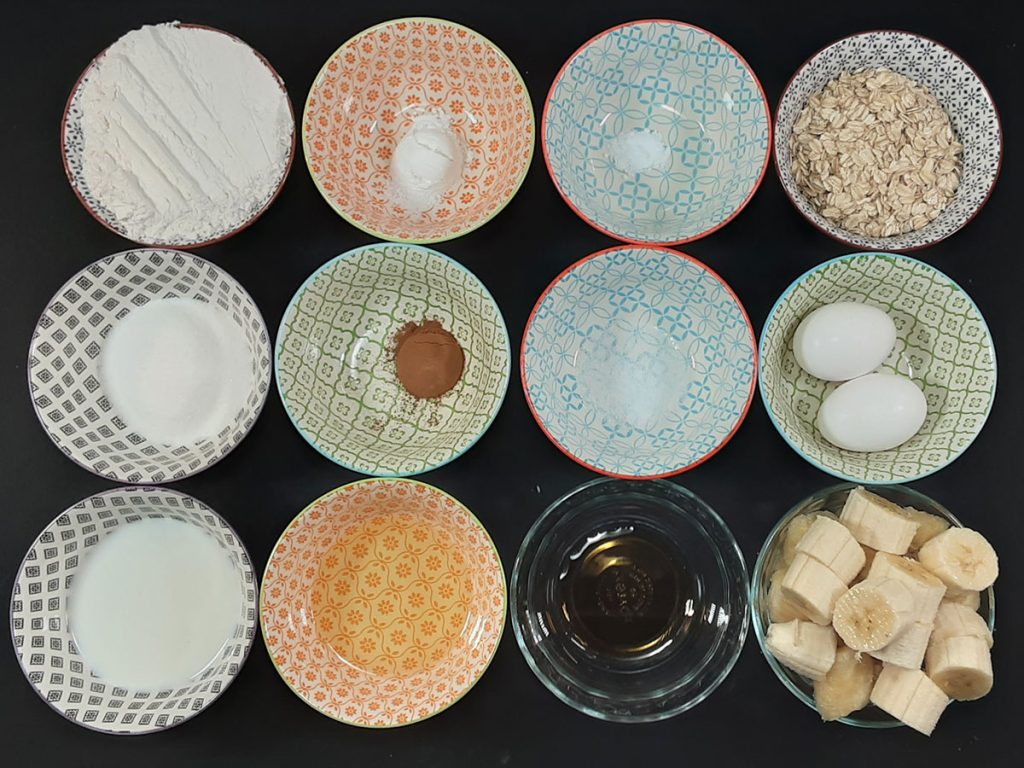
Equipment
- 2 Mixing Bowls
- 1 Fork
- 1 Spatula
Ingredients
- 1½ cups all-purpose flour
- 2 tsp baking powder
- ¼ tsp baking soda
- ¾ cup rolled oats
- ⅔ cup white sugar
- 2 tsp ground cinnamon
- 1 tsp salt
- 2 large eggs
- ⅓ cup milk
- ¼ cup vegetable oil
- 1½ tsp vanilla extract
- 3 med banana

How to Cook Banana Bread
Cooking Directions
- Preheat the Oven
Preheat your oven to 350°F
- Mix the Dry Ingredients
In a medium bowl combine the dry ingredients (flour, baking soda, baking powder, oats, sugar, cinnamon, and salt)
- Mix the Wet Ingredients
In a large bowl, finely mash the bananas with a fork. Whisk in eggs, milk, oil, and vanilla.
- Mix the Dry into the Wet Ingredients
Pour the dry ingredients into the bowl with the wet ingredients and mix by hand just until combined. Do not over-mix as this can make the banana bread tough.
- Bake the Banana Bread
Pour the banana bread batter into the pan and bake for 55 minutes or until a toothpick or cake tester comes out clean.

If you liked this dish please Rate This Recipe and leave a comment.
Banana Bread
Please Rate this Recipe
Equipment
Ingredients
- 1½ cups all-purpose flour
- 2 tsp baking powder
- ¼ tsp baking soda
- ¾ cup rolled oats
- ⅔ cup white sugar
- 2 tsp ground cinnamon
- 1 tsp salt
- 3 med bananas
- 2 large eggs
- ⅓ cup milk
- ¼ cup vegetable oil
- 1½ tsp vanilla extract
Instructions
- Preheat your oven to 350°F (180°C). Prepare a 9×5 loaf pan.
- In a medium bowl combine the dry ingredients (flour, baking soda, baking powder, oats, sugar, cinnamon, and salt)1½ cups all-purpose flour, 2 tsp baking powder, ¼ tsp baking soda, ¾ cup rolled oats, ⅔ cup white sugar, 2 tsp ground cinnamon, 1 tsp salt
- In a large bowl, finely mash the bananas with a fork. Whisk in eggs, milk, oil, and vanilla.3 med bananas, 2 large eggs, ⅓ cup milk, ¼ cup vegetable oil, 1½ tsp vanilla extract
- Pour the dry ingredients into the bowl with the wet ingredients and mix by hand just until combined. Do not over mix as this can make the banana bread tough.
- Pour the banana bread batter into the pan and bake for 55 minutes or until a toothpick or cake tester comes out clean.
Nutrition
Other Recipes That Go Well With Banana Bread
Photo Credits:
- By Taste The World Cookbook – Copyright 2022 All rights reserved.
- By Butter Bakery Cafe – By https://www.facebook.com/butterbakerycafe
- By Michael Hicks, CC BY 2.0, https://commons.wikimedia.org/w/index.php?curid=52169247
- By Alvintrusty – Own work, CC BY-SA 3.0, https://commons.wikimedia.org/w/index.php?curid=20135647
- By sheldonschwartz / Mobile Objective – Flickr, CC BY-SA 2.0, https://commons.wikimedia.org/w/index.php?curid=1895633
- By Jonathunder – Own work, GFDL 1.2, https://commons.wikimedia.org/w/index.php?curid=73620752
- By Michael Hicks – https://www.flickr.com/photos/mulad/4899605617/, CC BY 2.0, https://commons.wikimedia.org/w/index.php?curid=11489829
- By Mikael Häggström, M.D.- Author info- Reusing images- Conflicts of interest:NoneMikael Häggström – Own work, CC0, https://commons.wikimedia.org/w/index.php?curid=64379431
- By McGhiever – Own work, CC BY-SA 4.0, https://commons.wikimedia.org/w/index.php?curid=49744145


